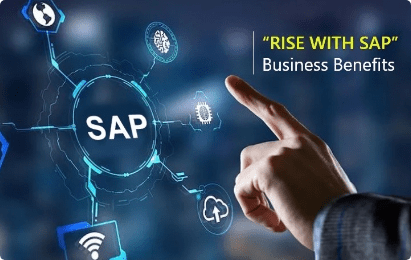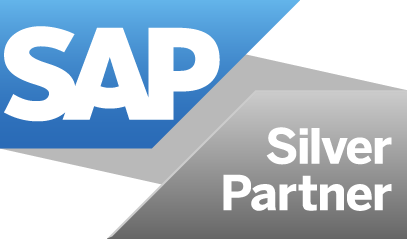Looking to migrate your ERP system into SAP HANA? Orane Consulting has a dedicated team of experienced SAP professionals that can help you make the transition. Contact us today for the best solution.

Blog
Orane’s blog posts keeping you up to speed with what’s hot in the world of business.
The 4 Biggest Myths about SAP S/4 HANA That You Should Stop Believing in

Introduction:
With all its innovative capabilities including application development, database management, and analytical processing, SAP HANA (now in its eleventh year) has truly become a disruptive technology in the ERP and data analytics domain. Some of its core features like processing capability of both transactional and analytical workloads and in-memory computing are disrupting the ERP market.
For Gartner’s Magic Quadrant in Data management solutions for analytics, SAP has been positioned as the market leader for seven consecutive years. Recently, SAP was also rated by Forrester Wave as the leader in data management for analytics.
Some of the facts about SAP HANA that make it the preferred ERP tool include 7x higher throughput, 1800x speed in analytics and reporting, and 4x lesser processing steps. However, along with the facts, there are several myths about SAP HANA that one needs to be aware of.
Here is a look at the four biggest myths about SAP HANA.
Myth 1 – SAP HANA can only work with other SAP applications.
Integrating SAP with non-SAP applications has its share of challenges, however, that does not mean it can only work with other SAP applications. For instance, third-party Business Intelligence (or BI) tools can connect and leverage the power of the SAP HANA platform – while connecting through SAP HANA SQL as the data source. SAP also offers certifications for third-party tools connecting to SAP HANA.
To dispel this popular myth, we need to differentiate between the SAP HANA full license and runtime edition. Yes, indeed, the runtime edition can only work with other native SAP applications. However, the fully licensed product is fully compatible with third-party applications.
Having said that, SAP HANA is a new product, most probably will not have all the functionalities to support your industry-specific ERP solution (developed using previous SAP ERP releases). In such a scenario, you need to take stock of the most in-demand functionalities for your business and work with the best SAP consultants to implement the best SAP-based industry solution.
Myth 2 – SAP HANA is only available as a cloud solution.
As compared to traditional database systems, SAP HANA can crunch more data volumes in a shorter time. However, that is not the only capability of this SAP system. While speed is important, it cannot on its own justify the cost and effort of businesses switching to the SAP HANA platform.
Among its main strengths, SAP HANA can efficiently combine the benefits of online transaction processing (OLTP) and online analytical processing (OLAP) within a single system. Apart from that, this platform can provide the necessary business agility needed to leverage data analytics, big data, and the Internet of Things.
Beyond speed and agility, SAP HANA can integrate and consolidate data from many sources, thus accelerating the extraction of business insights for better decision-making. For instance, the SAP Analytics Cloud – integrated into the SAP HANA Cloud platform – can drive better decisions to enhance operational efficiency and competitiveness.
Myth 3 – SAP HANA is designed only for faster data processing.
As compared to traditional database systems, SAP HANA can crunch more data volumes in a shorter time. However, that is not the only capability of this SAP system. While speed is important, it cannot on its own justify the cost and effort of businesses switching to the SAP HANA platform.
Among its main strengths, SAP HANA can efficiently combine the benefits of online transaction processing (OLTP) and online analytical processing (OLAP) within a single system. Apart from that, this platform can provide the necessary business agility needed to leverage data analytics, big data, and the Internet of Things.
Beyond speed and agility, SAP HANA can integrate and consolidate data from many sources, thus accelerating the extraction of business insights for better decision-making. For instance, the SAP Analytics Cloud – integrated into the SAP HANA Cloud platform – can drive better decisions to enhance operational efficiency and competitiveness.
Myth 4 – SAP HANA is an expensive solution.
Many businesses hesitate to migrate to the SAP HANA platform citing high licensing expenses and additional hardware costs. To counter this claim, SAP has moved from a single license policy to a 5-tier full-license price model that is based on the overall data volume. This means that the higher your data volume, the lower is your unit data package cost. As an example, for data over 16TB, customers only have to pay 1/4th of the previous costs.
In the short-term future, SAP HANA can incur higher investment costs, as its in-memory technology requires expensive disk drives for backups. Having said that, the fact is that hardware costs have decreased over the years. Moreover, SAP HANA can also be deployed as a cloud solution that can optimize your infrastructural costs over the long run.
Conclusion:
While the in-memory capability of the SAP HANA platform is among its best innovations, there is a lot more that businesses adopting this technology can gain from – including a better user experience, seamless integration with third-party tools, and faster data insights. Through this article, we have listed and debunked some of the most common myths about SAP HANA.
Subscribe to our communication
You agree to receive newsletters, marketing communication and latest developments from us.

6 Tips to Boost Your Business Performance
- August 19, 2022

How ERP Implementation is Essential for Businesses? – Top 5 Reasons
- August 19, 2022

Take your Data into next level
- August 19, 2022

Rise with SAP: Business Benefits
- August 19, 2022

SAP Masterdata Management
- August 19, 2022

